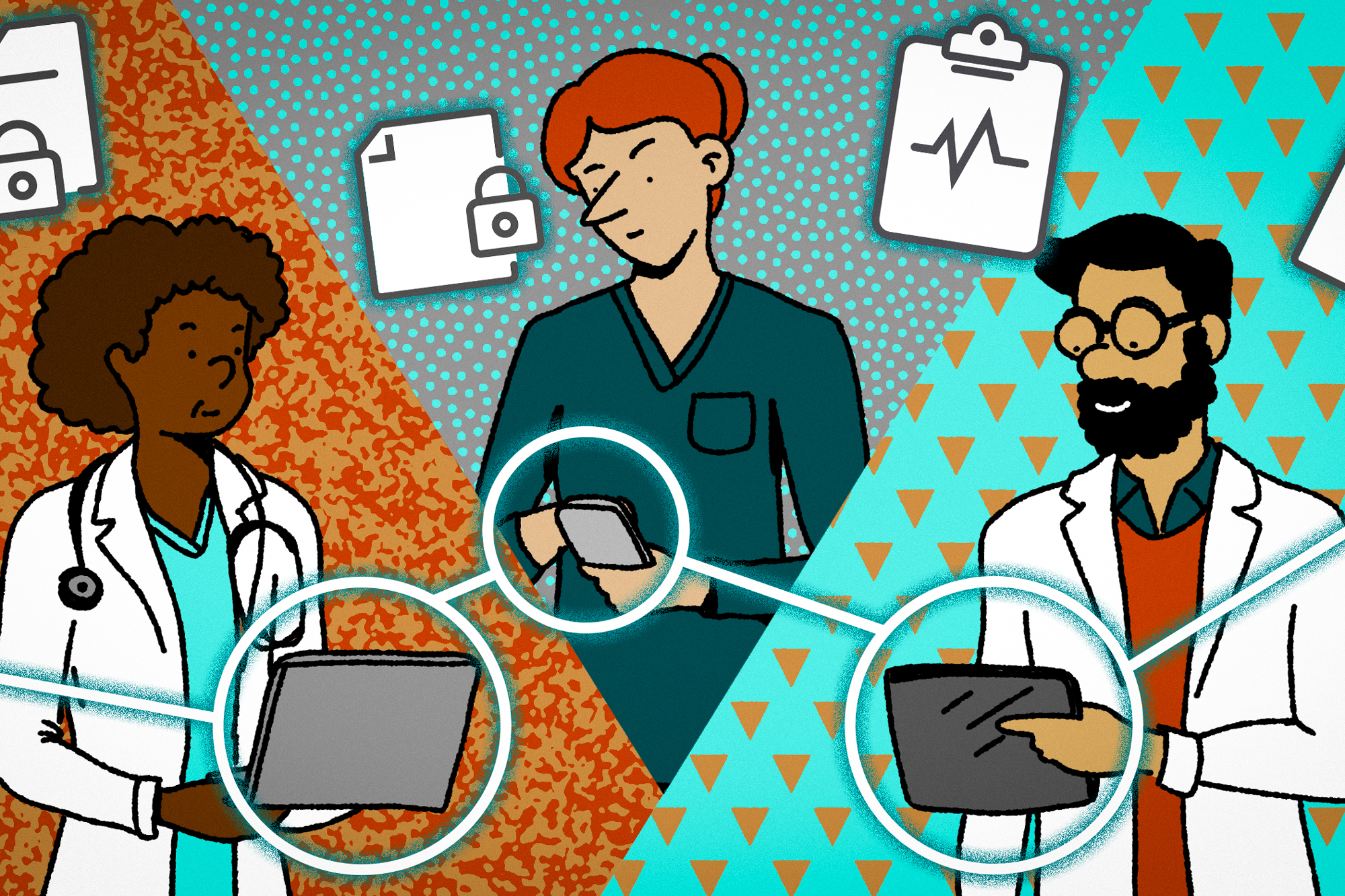
[ad_1]

There’s a lot of excitement at the intersection of artificial intelligence and health care. AI has already been used to improve disease treatment and detection, discover promising new drugs, identify links between genes and diseases, and more.
By analyzing large datasets and finding patterns, virtually any new algorithm has the potential to help patients — AI researchers just need access to the right data to train and test those algorithms. Hospitals, understandably, are hesitant to share sensitive patient information with research teams. When they do share data, it’s difficult to verify that researchers are only using the data they need and deleting it after they’re done.
Secure AI Labs (SAIL) is addressing those problems with a technology that lets AI algorithms run on encrypted datasets that never leave the data owner’s system. Health care organizations can control how their datasets are used, while researchers can protect the confidentiality of their models and search queries. Neither party needs to see the data or the model to collaborate.
SAIL’s platform can also combine data from multiple sources, creating rich insights that fuel more effective algorithms.
“You shouldn’t have to schmooze with hospital executives for five years before you can run your machine learning algorithm,” says SAIL co-founder and MIT Professor Manolis Kellis, who co-founded the company with CEO Anne Kim ’16, SM ’17. “Our goal is to help patients, to help machine learning scientists, and to create new therapeutics. We want new algorithms — the best algorithms — to be applied to the biggest possible data set.”
SAIL has already partnered with hospitals and life science companies to unlock anonymized data for researchers. In the next year, the company hopes to be working with about half of the top 50 academic medical centers in the country.
Unleashing AI’s full potential
As an undergraduate at MIT studying computer science and molecular biology, Kim worked with researchers in the Computer Science and Artificial Intelligence Laboratory (CSAIL) to analyze data from clinical trials, gene association studies, hospital intensive care units, and more.
“I realized there is something severely broken in data sharing, whether it was hospitals using hard drives, ancient file transfer protocol, or even sending stuff in the mail,” Kim says. “It was all just not well-tracked.”
Kellis, who is also a member of the Broad Institute of MIT and Harvard, has spent years establishing partnerships with hospitals and consortia across a range of diseases including cancers, heart disease, schizophrenia, and obesity. He knew that smaller research teams would struggle to get access to the same data his lab was working with.
In 2017, Kellis and Kim decided to commercialize technology they were developing to allow AI algorithms to run on encrypted data.
In the summer of 2018, Kim participated in the delta v startup accelerator run by the Martin Trust Center for MIT Entrepreneurship. The founders also received support from the Sandbox Innovation Fund and the Venture Mentoring Service, and made various early connections through their MIT network.
To participate in SAIL’s program, hospitals and other health care organizations make parts of their data available to researchers by setting up a node behind their firewall. SAIL then sends encrypted algorithms to the servers where the datasets reside in a process called federated learning. The algorithms crunch the data locally in each server and transmit the results back to a central model, which updates itself. No one — not the researchers, the data owners, or even SAIL —has access to the models or the datasets.
The approach allows a much broader set of researchers to apply their models to large datasets. To further engage the research community, Kellis’ lab at MIT has begun holding competitions in which it gives access to datasets in areas like protein function and gene expression, and challenges researchers to predict results.
“We invite machine learning researchers to come and train on last year’s data and predict this year’s data,” says Kellis. “If we see there’s a new type of algorithm that is performing best in these community-level assessments, people can adopt it locally at many different institutions and level the playing field. So, the only thing that matters is the quality of your algorithm rather than the power of your connections.”
By enabling a large number of datasets to be anonymized into aggregate insights, SAIL’s technology also allows researchers to study rare diseases, in which small pools of relevant patient data are often spread out among many institutions. That has historically made the data difficult to apply AI models to.
“We’re hoping that all of these datasets will eventually be open,” Kellis says. “We can cut across all the silos and enable a new era where every patient with every rare disorder across the entire world can come together in a single keystroke to analyze data.”
Enabling the medicine of the future
To work with large amounts of data around specific diseases, SAIL has increasingly sought to partner with patient associations and consortia of health care groups, including an international health care consulting company and the Kidney Cancer Association. The partnerships also align SAIL with patients, the group they’re most trying to help.
Overall, the founders are happy to see SAIL solving problems they faced in their labs for researchers around the world.
“The right place to solve this is not an academic project. The right place to solve this is in industry, where we can provide a platform not just for my lab but for any researcher,” Kellis says. “It’s about creating an ecosystem of academia, researchers, pharma, biotech, and hospital partners. I think it’s the blending all of these different areas that will make that vision of medicine of the future become a reality.”
[ad_2]
Source link